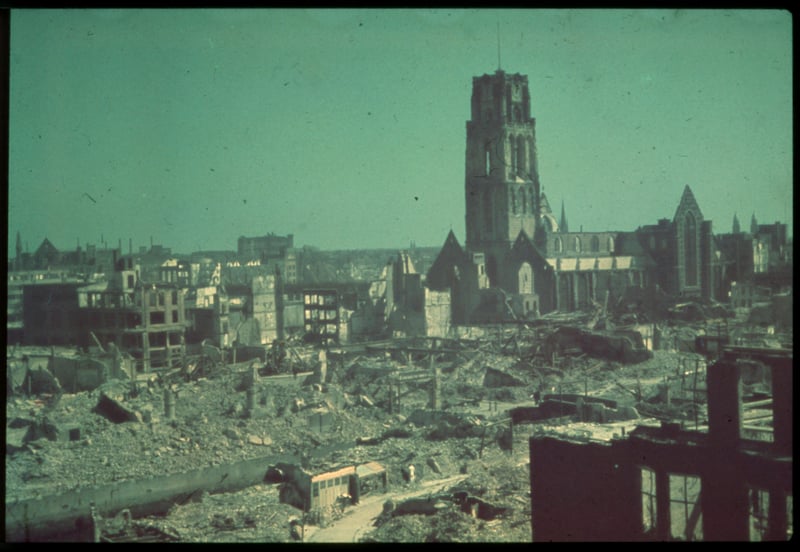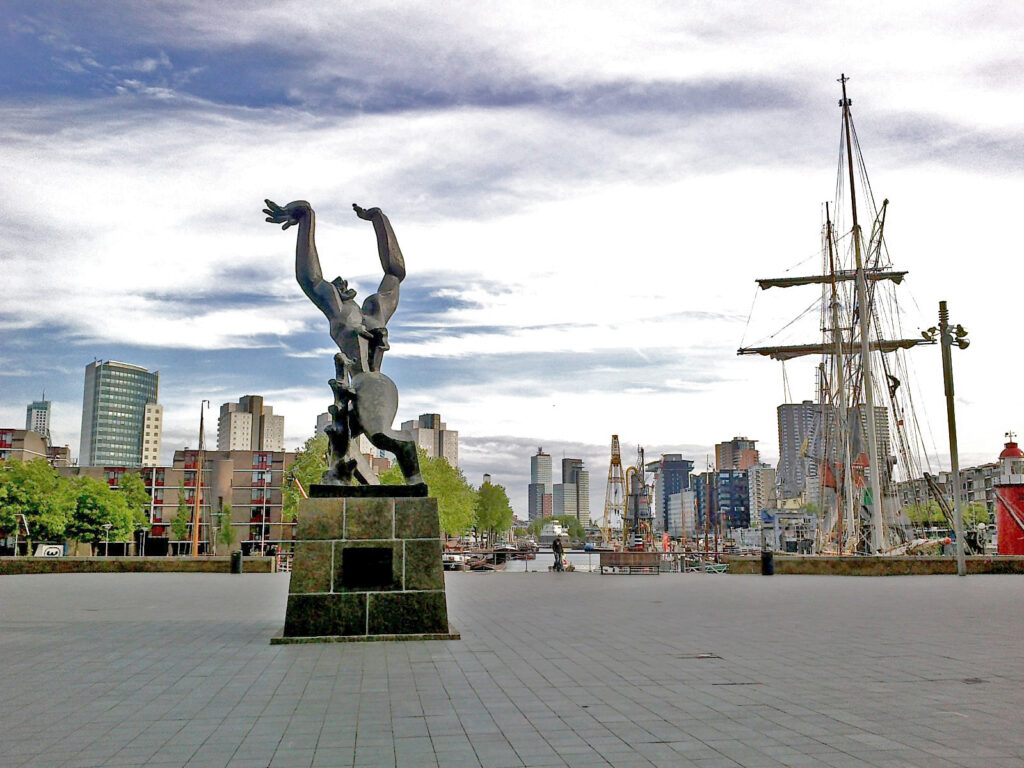Just ten days after the yearly Dutch commemoration, called Dodenherdenking (Remembrance Day) and Bevrijdingsdag (Liberation Day), the inhabitants of Rotterdam have another infamous date to remember — May 14.
It was on this day, back in 1940, that a Nazi bombardment utterly destroyed the centre of Rotterdam.
The event is internationally known as the Rotterdam Blitz, while in the Netherlands it is referred to as het Bombardement (the bombardment).
The bombing of Rotterdam, aka the Rotterdam Blitz
Call it the Dutch equivalent of Pearl Harbour, if you will — the effect of the bombing of Rotterdam was as decisive as it was horrible.
After several days of fierce fighting, the Nazi invasion of the Netherlands had come to a stalemate in Rotterdam.
Taken by surprise by the fierce resistance of the Dutch army, Hitler knew he had to break the spirit of the Dutch people as a whole.

So it was that Nazi bombers dropped incendiary bombs over Rotterdam, quickly starting a fire that destroyed approximately 85,000 homes and ended the lives of nearly 900 people.
The Dutch were, at last, no match for the Nazi war machine.
Yielding to threats that the same fate would await Utrecht and Amsterdam, the Dutch surrendered unconditionally after the bombing of Rotterdam, marking the beginning of five years of Nazi occupation.
The bombing of Rotterdam: the legacy
How can we best keep this part of history preserved for future generations?
The most confrontational to the bombing of Rotterdam is, without a doubt, Ossip Zadkine’s statue De Verwoeste Stad (The Destroyed City).

Located at a square named after the year 1940, the statue leaves the viewer with a haunting image of a soul in anguish, its heart torn out.
The Forgotten Bombardment of 1943
Though the Netherlands and Germany are BFFs today, het Bombardement has been an important reason why Dutch resentment against the Germans lingered long after World War II.
In this respect, it’s quite telling that another bombardment of Rotterdam took place during the war, which has remained unknown for a long time.
READ MORE | Photo report: the Netherlands at war, 1940-1945
On March 31, 1943, a tragic mistake caused several dozen American B-17 bombers to drop their deadly load on Rotterdam residential areas, rather than at the Nazi military installations.
More than three hundred people lost their lives.
Fittingly named “The Forgotten Bombardment,” this historical event has been shrouded in silence for decades, until the unspoken ban was lifted in the 90s.
Rotterdam today
Rotterdam rose from the ashes to become a beacon of Dutch culture once again. Priding itself on its no-nonsense mentality, Rotterdam is a city teeming with life and innovation.
Home to some of the most well-known Dutch architectural pieces, such as the Euromast and the Kubuswoningen, Rotterdam’s skyline is truly iconic.
READ MORE | Stunning colourised footage of Rotterdam before WWII (video inside!)
Today, as a bustling international city, Rotterdam is a magnet for internationals and young talent from around the world.
This May 14, learn about the bombing of Rotterdam and its lasting impact. Share the story — it’s history everyone should know.
Feature Image: Unknown/Wikimedia Commons/Public domain







Very bad, this bombing of Rotterdam. But the nazi’s were paid back thousandfold in their home country! And very unfortunate the bombing by the Americans. Stupid mistake. The same thing happened in The Hague by the RAF I think when they held the map upsidedown over Bezuidenhout.
I lived through this bombing,born in 1939,yaers after we still had to live with all the ruins, but the people of Rotterdam have a can do mentality, and grew before our eyes, still many years of poverty,American church groups help out with relief packages what was greatly appreciated ,for we had not must left after 5 years of war.
My dad watched this as a small boy 15 km away and the horror and despair of that day never left him or my family… one of the reasons they emigrated to Australia after the war.